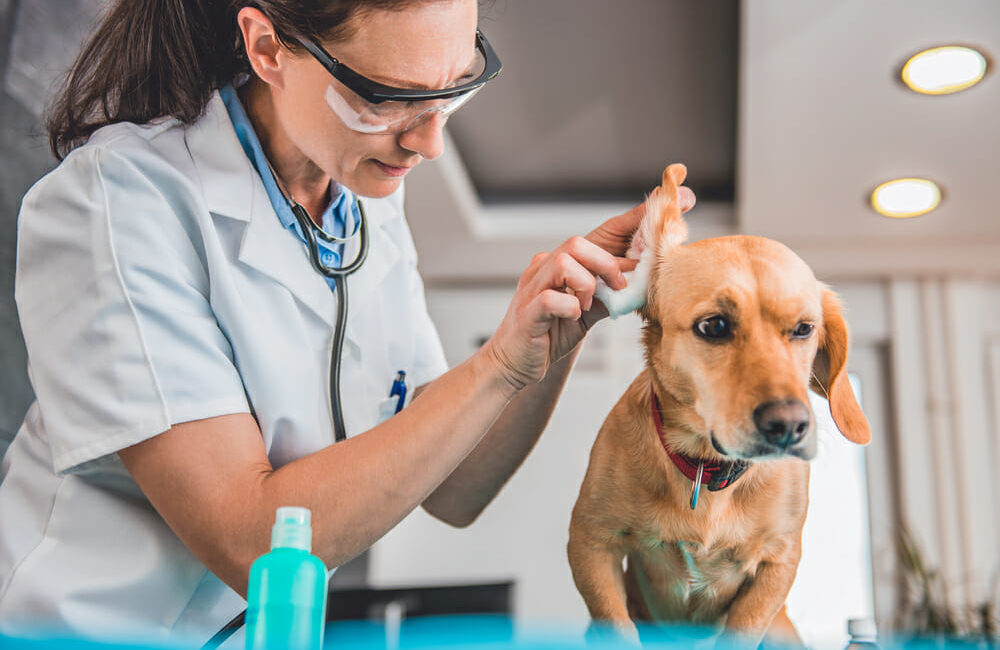Have you ever been kept up all night by a dog shaking their head and scratching their ears? Me too! I try to keep an eye on my dogs’ ears to ward off any problems before they begin. Usually, a quick flip of the ear flap will let me know if any trouble is brewing.
Any sign of redness, odour and a dirty looking ear let me know it is probably time to take action. Ear infections often come on quickly and can get very painful for your pet. It is important to get it checked by a veterinarian right away.
Once at your veterinarian, they will check for all of the same symptoms you may have noticed at home. Some symptoms may include redness, odour, discharge and even swelling. Your veterinarian will need to take a swab from the inside your pet’s ear. A technician can then look at it under a microscope and will determine whether it is an infection caused by yeast, bacteria or both.
Your veterinarian needs to have this information as it will determine which medication will be appropriate to treat your pet. Most medications that treat ear infections are in liquid form and will need to be administered directly into the ear. Your veterinarian will recommend the length of time that the medication needs to be given. As with any medication, it is very important to follow the instructions carefully. The ear may look like it is healed, but if you finish the medication before the recommended time the chance of the infection recurring is greatly
increased.
Yout veterinarian may also want to determine the cause of the infection. Sometimes it can be caused by the ear getting wet and not drying out completely. Often times, it is caused by food or environmental allergies. The veterinarian can guide you through how to determine if an allergy causes it. Once the ear has healed completely, there are ear cleansers that can be used for maintenance to help reduce the chance of another problem occurring.
If you have any questions, give us a call at 519.773.3911.
Written by: BJ Gordon, Lead CCR




